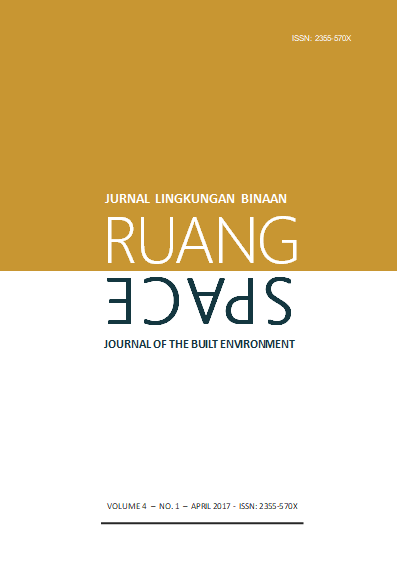Pemanfaatan Ruang Terbuka Publik sebagai Setting Kegiatan Ngaben Masal di Banjar Teges Kawan Yangloni, Peliatan
Abstract
Peliatan Village which is located in a close proximity to the famous and well known Ubud, has been developing vastly into a tourist destination. Following this development, demand for spaces escalates, squeezing those available for ritual, ceremonial, and traditions related incidental uses. In consequence, the latter functions have been accommodated within existing public spaces, which are gradually available in a more limited scale. Conflicts occur when this practice interrupts physical formations of public space in use and therefore its original roles. Taking a case study of the use of open public space for mass-cremation ceremony in Peliatan Village, this study analyses the impact of ritual processions on a shared open space, especially in regard to its functions that this space is assigned for. It used an inductive approach and a descriptive qualitative method. Study findings demonstrate that the additional uses imposed on public open space in Peliatan Village is disruptive to the overall existence of this spatial unit. It is further discovered that these added functions disturb the quality of public space's spatial settings by disrupting its fixed, semi-fixed, and non-fixed elements, which shape this public property at the first place. The article concludes that a new strategy is urgently needed, if a public space is to be utilized in combination with other mass communal functions.
Keywords: public open space, mass ngaben ceremony, ritual procession, spatial setting
Downloads
The copyright of the received article shall be assigned to the journal as the publisher of the journal. The intended copyright includes the right to publish the article in various forms (including reprints). The journal maintains the publishing rights to the published articles.



